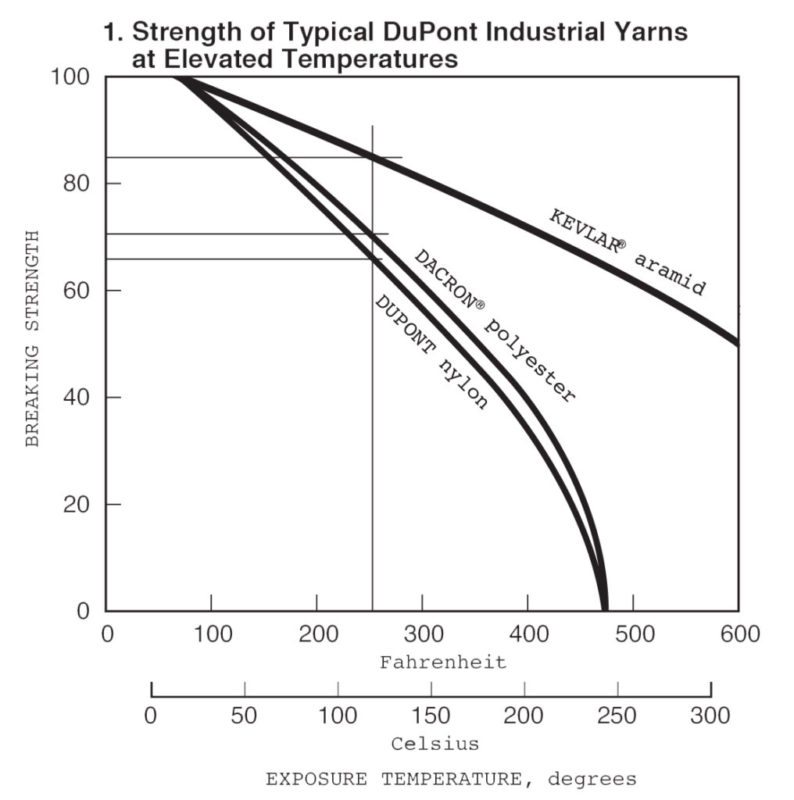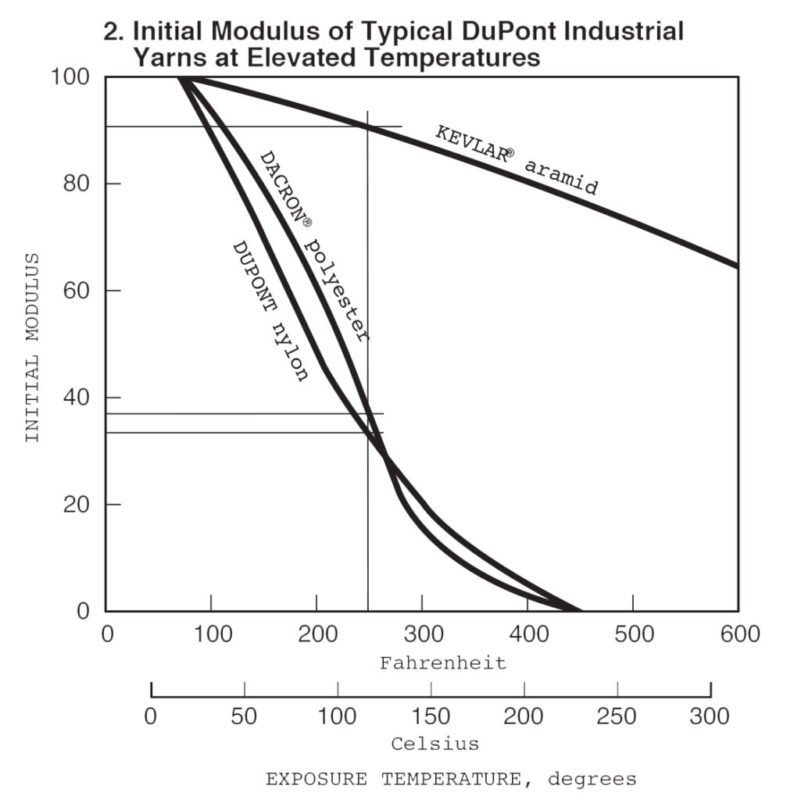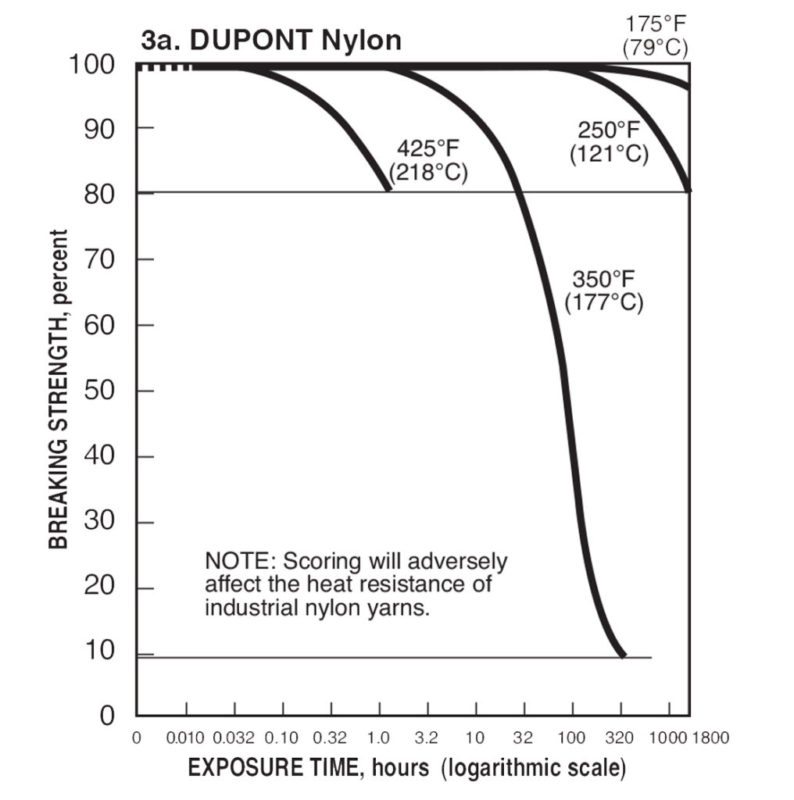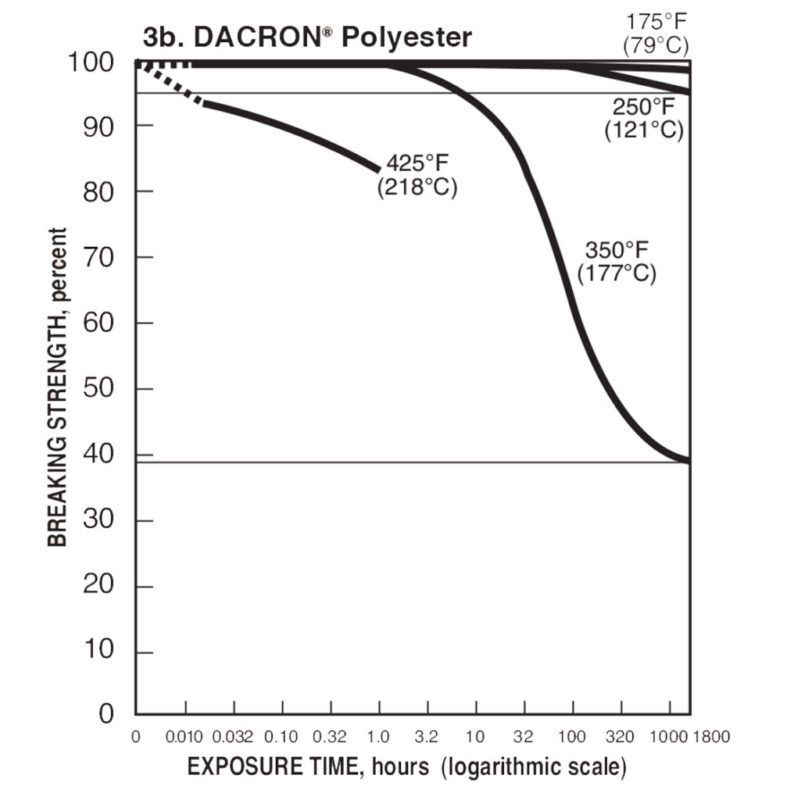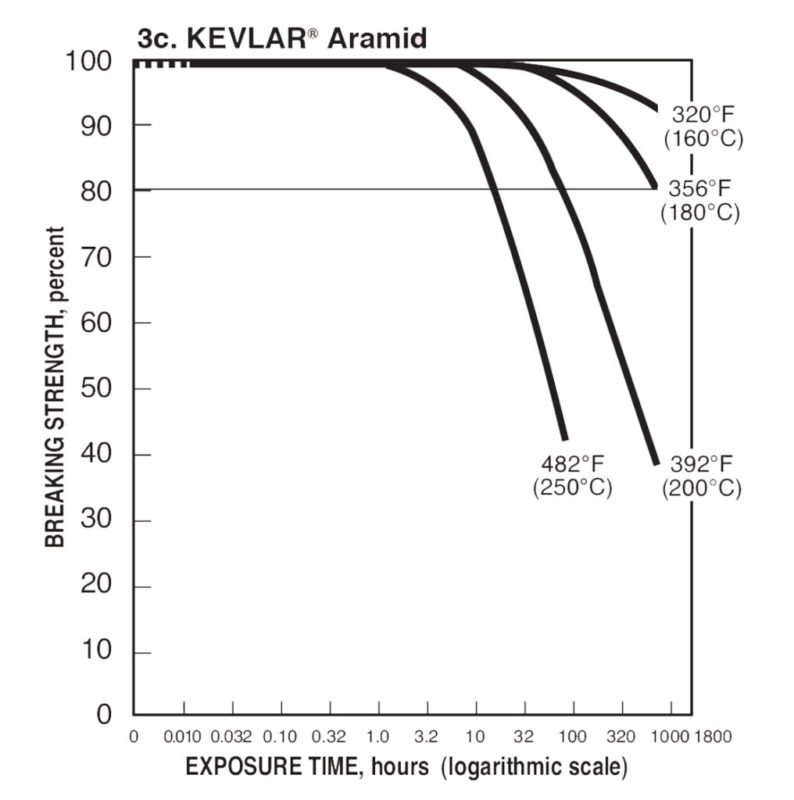A Comparison Of Tire Cord and Elastomeric Materials Used in Spherical and Other Style Expansion Joints
NOTE: At 250°F, there is no significant change in Kevlar Breaking Strength, Table 1; Modulus, Table 2; or Aging Properties, Table 3c.
| Elastomers | Natural Rubber | EPDM | Neoprene® | Hypalon® | ChloroButyl | Nitrile |
|---|---|---|---|---|---|---|
| Tensile Strength Carbon Black Reinforcement | Over 3000 psi (2122 kg/cm2) | Over 3000 psi (2122 kg/cm2) | Over 3000 psi (2122 kg/cm2) | Over 3000 psi (2122 kg/cm2) | Over 2500 psi (1768 kg/cm2) | Over 2000 psi (1415 kg/cm2) |
| Adhesion to Metals | Excellent | Good to Excellent | Excellent | Excellent | Good | Excellent |
| Adhesion to Fabric | Excellent | Good | Excellent | Good | Good | Good |
| Tear Resistance | Good | Good | Good | Fair | Good | Good |
| Abrasion Resistance | Excellent | Excellent | Excellent | Excellent | Fair | Good |
| Permeability to Gases | Fair | Fair | Low | Low to Very Low | Good | Fair |
| Acid Resistance: Dilute | Fair To Good | Excellent | Excellent | Excellent | Good | Good |
| Acid Resistance: Concentrated | Fair To Good | Excellent | Good | Very Good | Fair | Fair |
| Resistance to: Swelling in Lubricating Oil | Poor | Poor | Good | Very Good | Poor | Excellent |
| Resistance to: Gasoline | Poor | Poor | Good | Good | Poor | Excellent |
| Resistance to: Animal and Vegetable Oils | Fair | Good | Good | Good | Good | Excellent |
| Resistance to: Water Absorption | Very Good | Very Good | Good | Very Good | Very Good | Good |
| Resistance to: Oxidation | Good | Excellent | Excellent | Excellent | Excellent | Good |
| Resistance to: Ozone | Fair | Outstanding | Excellent | Outstanding | Excellent | Fair |
| Resistance to: Sunlight Aging | Poor | Outstanding | Very Good | Outstanding | Excellent | Poor |
| Resistance to: Heat Aging | Fair | Excellent | Good | Excellent | Excellent | Good |
| Temp. Ratings Continuous Service: *Hot | 180°F (82°C) | 250°F (121°C) | 200°F (93°C) | 250°F (121°C) | 250°F (121°C) | 220°F (104°C) |
| Temp. Ratings Continuous Service: *Cold | minus 10°F (minus 23°C) | minus 60°F (minus 51°C) | minus 10°F (minus 23°C) | minus 10°F (minus 23°C) | minus 10°F (minus 23°C) | 10°F (minus 12°C) |

